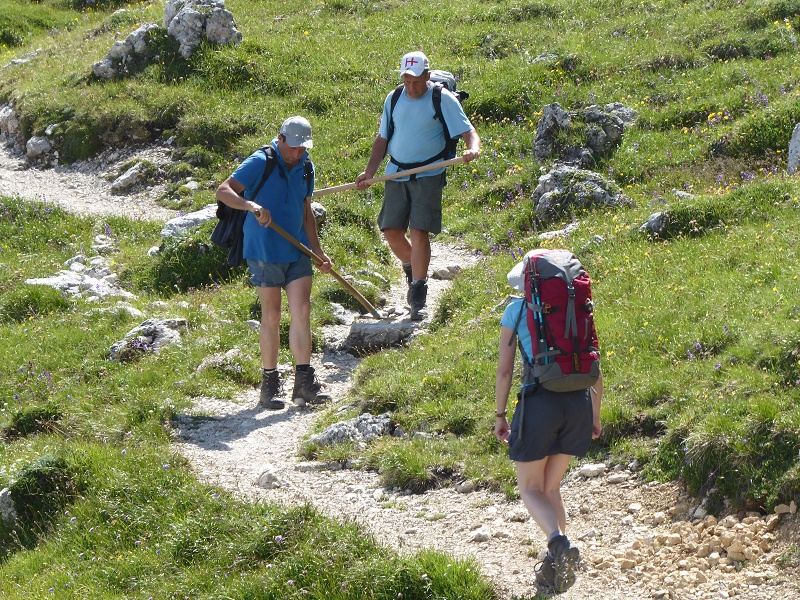
I have just returned from the Dolomites to find extensive media coverage on how Scotland is failing to provide the infrastructure necessary to support visitors. On Skye, there are claims that the island has reached the limit in terms of the number of visitors it can sustain (see here), while in Orkney suggestions of a tourist tax (see here) on luxury cruise liners to fund infrastructure have been predictably dismissed under the neo-liberal mantra that all tax is bad. I suspect most Italians would be astonished by the way these debates are framed in Scotland. The evidence on the ground from the Dolomites is that far more money is being invested in tourism infrastructure than in Scotland and there are far more visitors, with consequent benefits both to people and to the economy. We saw signs saying tourism in the Dolomites is worth £50bn a year and, while this is considerably boosted by downhill skiing, it dwarfs the latest figure for tourism spend in Scotland of £8.9bn. In this post I will consider how investment in footpaths in Scotland compares to the Dolomites.
Back in July, in a very welcome article in the Scotsman (see here) Grant Moir, Chief Executive of the Cairngorms National Park Authority, raised the need to think about how we pay for paths in our National Parks. This in my view is exactly what our National parks should be doing – instead of pretending all is rosy and that they are managing on ever decreasing budgets – they should be articulating a new vision for the future and how this could be funded, which could then incidentally be adopted by other places like Skye and Orkney.
Unfortunately the heading of the article (which was no doubt inserted by a sub-editor) – “freedom to roam is a costly business” – reflects the prevailing negative stance towards access in Scotland by the establishment, which sees everything in terms of cost not opportunity. In fact, the amounts Grant Moir referred to are tiny. So, the CNPA has spent £10m on paths in 15 years – that’s just £666k a year – and requires at least £500k a year to maintain paths. Compare that to the £3bn that the Scottish Government has committed to pay for the dualling of 80 miles of the A9. If just 1% of that – £30m – were spent on paths along the A9 corridor over the next ten years the CNPA and neighbouring local authorities would be awash with money to spend on paths. Instead, the CNPA at present has to rely on Heritage Lottery funding, the £3.2m awarded in 2015 over 5 years for the Mountains and People project which covers both our National Parks.
Paths in the Dolomites
The path network in the Dolomites is far more extensive than what we have in Scotland and this is partly for historical reasons.
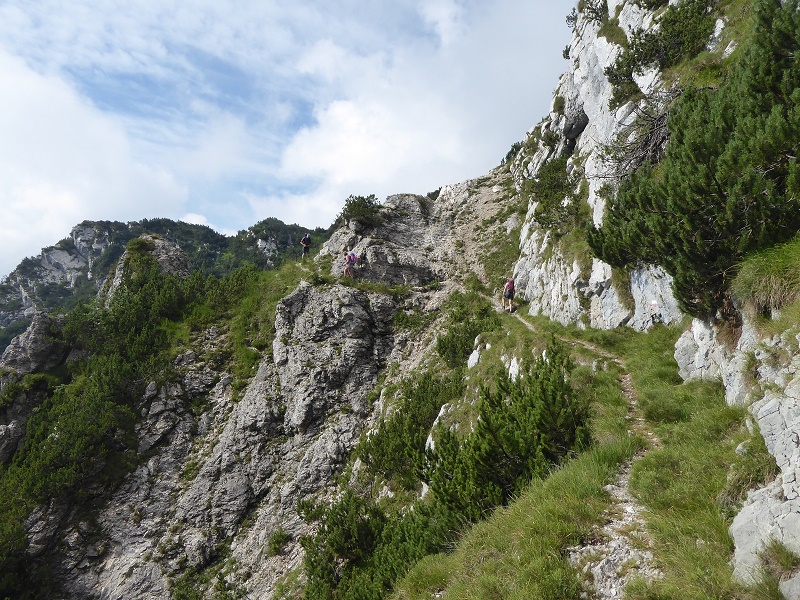
Most people are probably aware that the Dolomites was the setting for major battles in the first world war in which 750,000 Italians died and which saw an extensive network of paths/tracks and via ferrata constructed high up in the mountains. These now form the base for the mountain path network. By contrast our own military roads, with a few notable exceptions such as along the West Highland Way, tend, because of their location along the floors of straths, to have become part of the trunk road network.
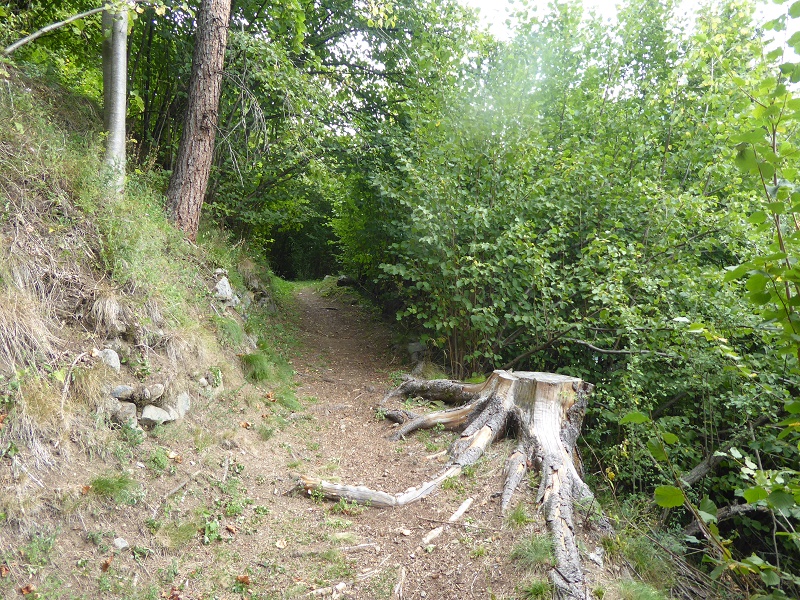
The Dolomites also, however, have far more paths lower down. I was based for a time in a lovely small town called Predazzo which is surrounded by forest. I had no map to the area but no need of one. Whatever way I left the town – and I did four runs in four different directions – I came across a multitude of path options. The paths in the woods appear to exist because local people have worked the forests for centuries – the commune that runs Predazzo is 800 years old – a contrast to Scotland where people were cleared from the land and few paths were needed for work purposes, the main exception to this being our fine stalking paths. These are thin on the ground however in comparison to the historic path legacy in the Dolomites.

The Dolomites, and indeed many other places in Europe including England, have had a head start over Scotland in terms of path infrastructure. This was recognised in the discussions which led to our access legislation which identified a need for a more extensive path network: hence the provisions of the Land Reform Act about the creation of core path networks. Unfortunately due to neo-liberal thinking, in which it is held a self-evident truth that nothing should be provided for free, and austerity the aspirations for a comprehensive path network have never been delivered (despite the efforts of many good people). Instead our National Parks and other access authorities are left scrabbling for money. This is quite a contrast to what I saw in the Dolomites.
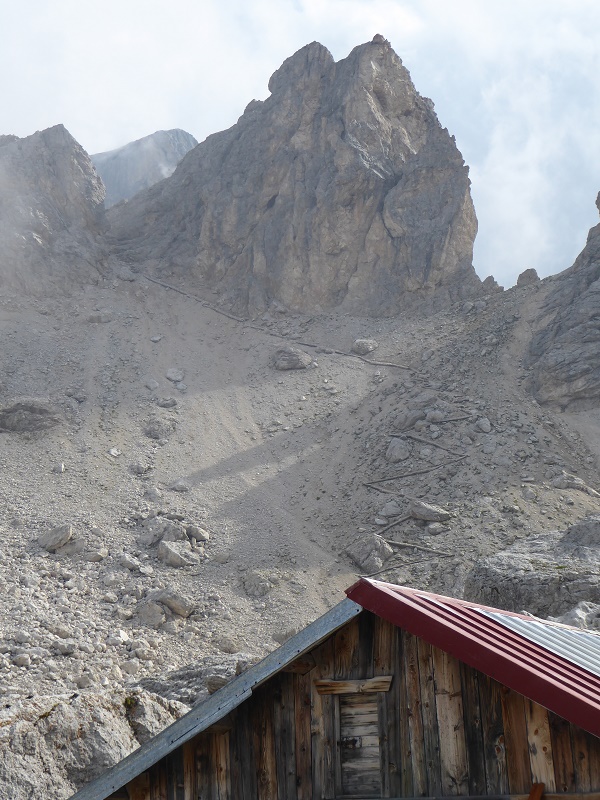


While in the Dolomites I stayed in the Firenze Hut twice, the first as part of the Alta Via 2 when I walked up this path. On my second visit to climb we found it closed, part of the path had been swept away in a great storm. However, unlike the Cairngorms where – as Grant Moir states – people are still trying to find money to repair the damage from the great floods on Deeside, signs had gone up immediately saying what had happened and there was evidence the path was being repaired. What I think this demonstrates is that path maintenance is a priority in Italy in a way that is unthinkable in Scotland.
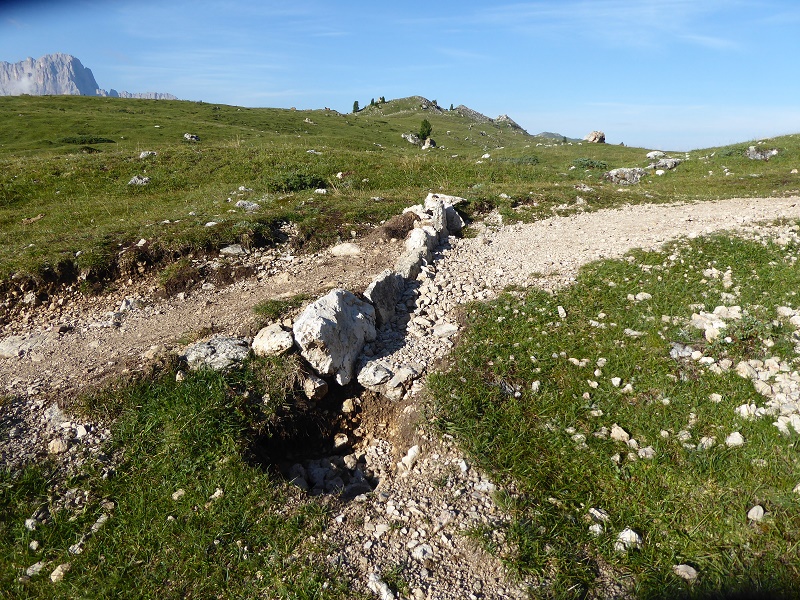
So why is this? Part of the explanation I think lies in the power to make decisions and budgets to implement them being far more devolved than in Scotland. In most of the huts we stayed in we paid a small tourism tax which is used to fund infrastructure locally. Behind this though is a general appreciation that people want to experience the fantastic landscape of the Dolomites and what this requires is for people to be able to get out into those landscapes in the way they want.
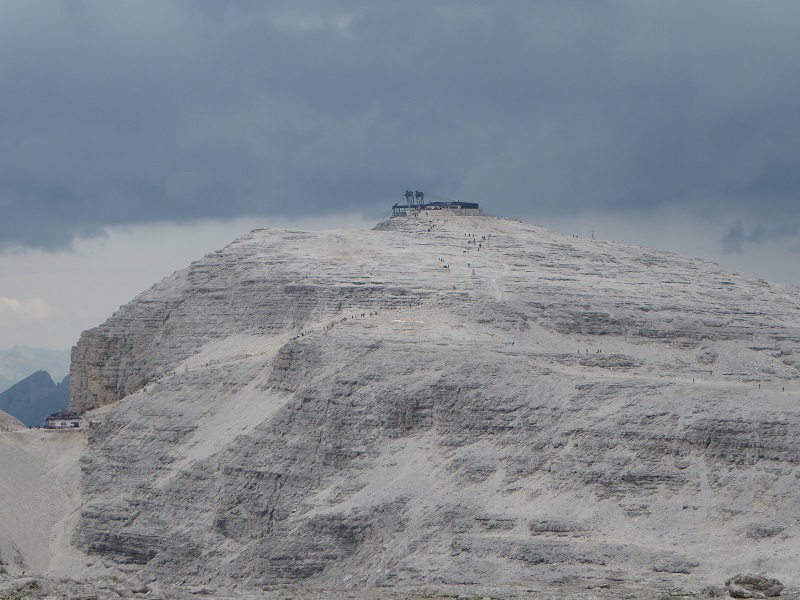
One of the best ways to do this is by providing paths. This is backed by some interesting research (see here) which shows that satisfaction with the landscape is the biggest single factor influencing tourism spend:
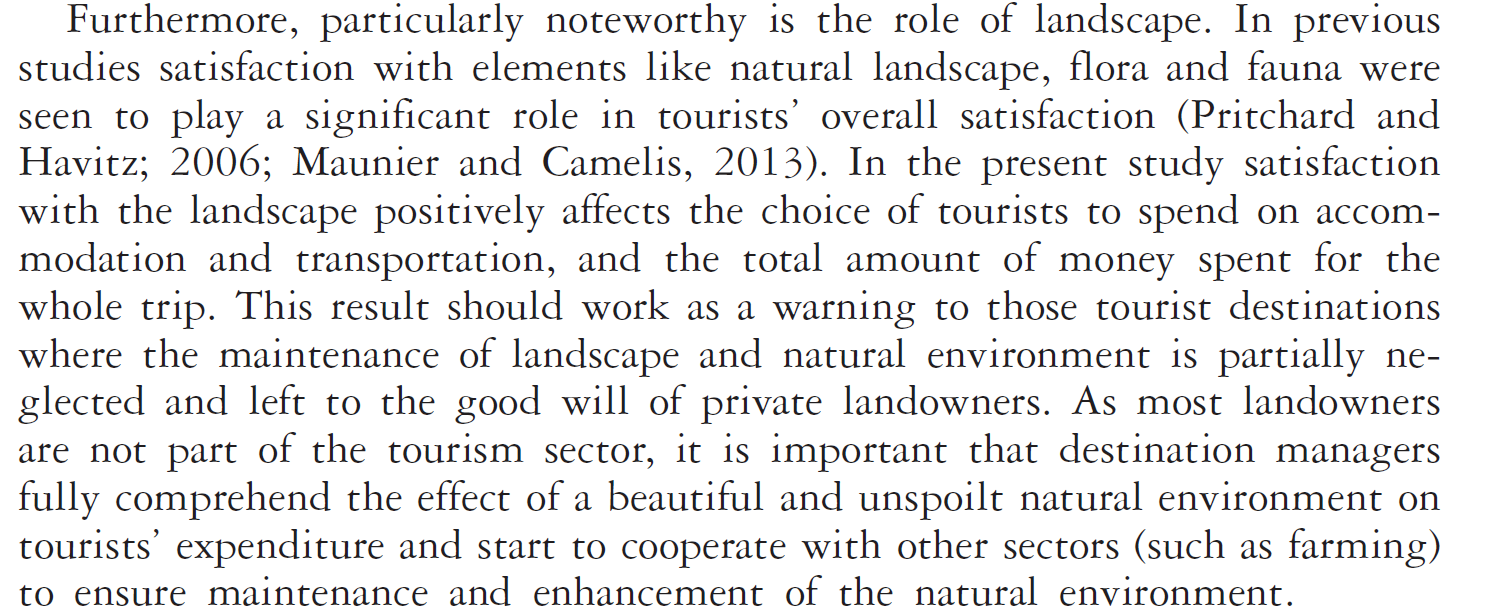
A warning to the Loch Lomond and Trossachs National Park Authority who are allowing much of the landscape of the National Park to be trashed through the creation of unnecessary new and poorly constructed forestry and hydro tracks. What they should be focussing on is the creation of a quality path network.
An example of our failure to invest from the Loch Lomond and Trossachs National Park
The contrast between Scotland and the Dolomites is illustrated by these photos from Arrochar, which I received from reader Stephen Pimley, on arriving back in Glasgow. Its only a tiny section of path, funded by multiple agencies, but I believe it tells an important tale.
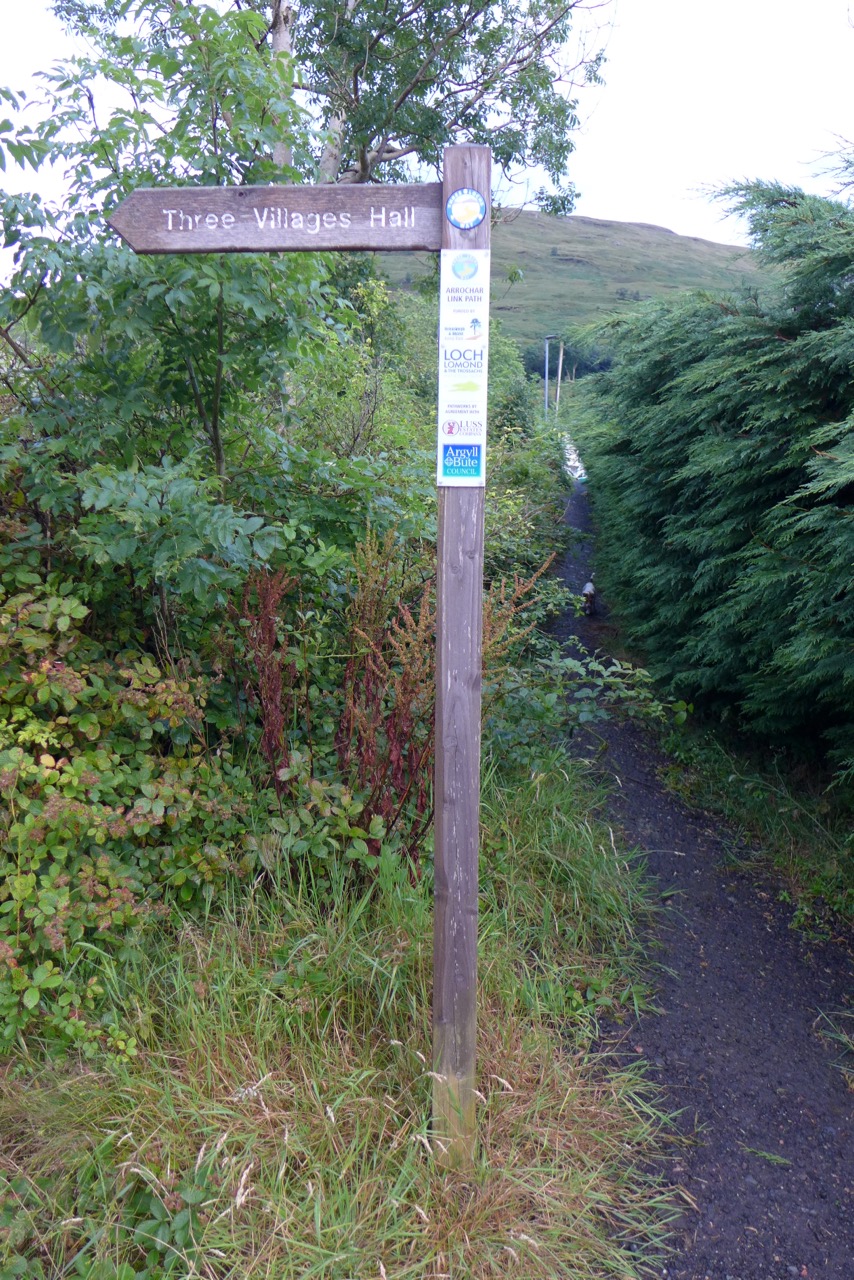
Here is the problem in Stephen’s own words: “I see tourists standing in a state of puzzlement in front of the overgrown brambles and conifer hedge. They stand at the side of the road and move on………………I have raised a work request on the Argyll and Bute council but previous requests have been ignored. Hopefully the fact that there are multiple ‘partners’ involved won’t lead to one of those desperate “its not my job!” situations”.
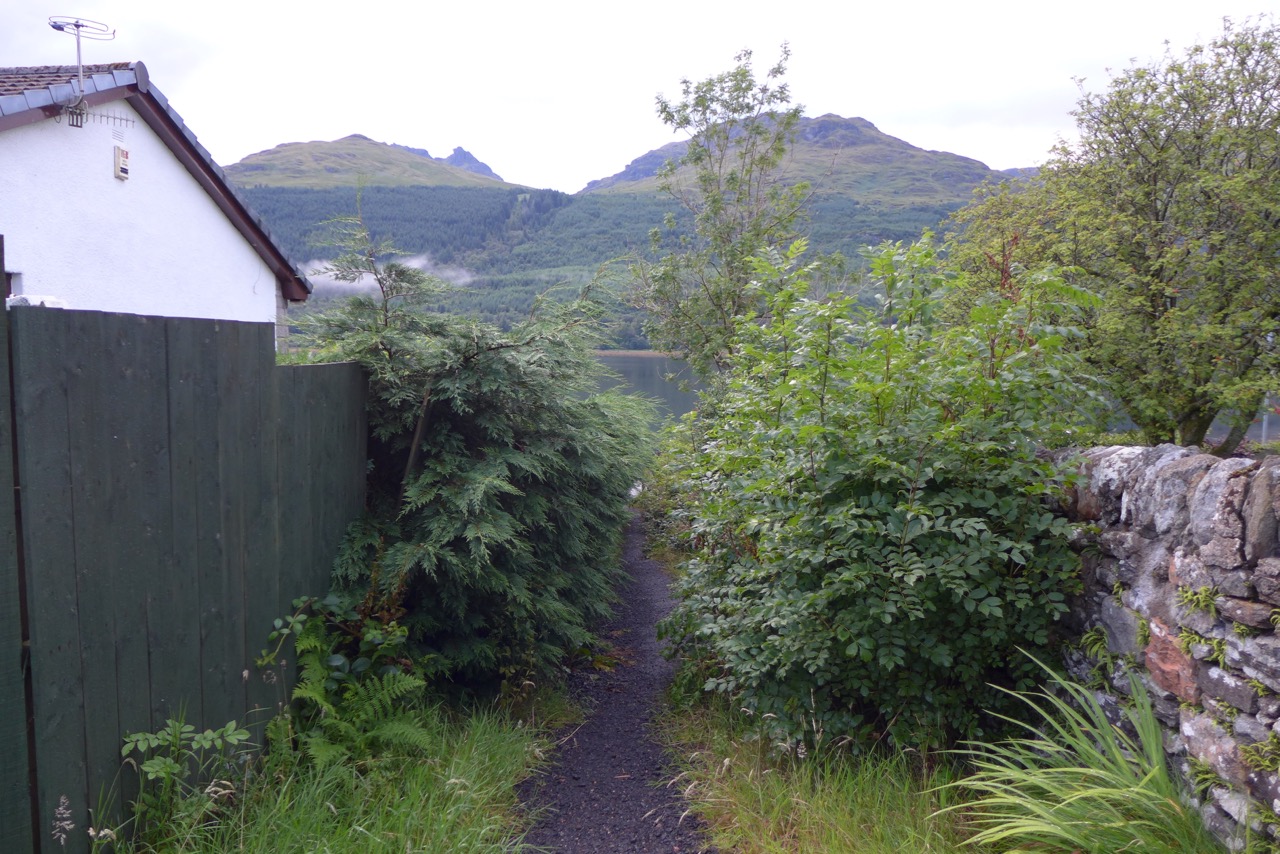
The basic problem is that there is almost no money available for basic path maintenance. Most of the paths through dense vegetation like this in the Dolomites are strimmed to keep them clear for walkers. By contrast our public authorities seem to expect that volunteers should do this and, while there is a very active and committed group of volunteers in Arrochar – where the Community Council has been long trying to improve the local amenity of the area and without whom its doubtful whether any of the attempts to clear up the beach at the head of Loch Long would have happened – I have been informed most of these volunteers are now in their seventies. They should not be having to do this.
Is it really too much to aspire for that there should be one part-time footpath maintenance worker available to every community in the National Park? This would help keep young people in the villages, as happens in Italy. It could even provide all the pathwork trainees on the Mountains and People project jobs in the longer term. Instead, what is happening in our National Parks, is that pathwork is funded by one source of temporary funding after another rather than being treated as a core function of National Parks.
What needs to happen
- I would like to see our National Parks learn and compare themselves to places in other countries, whether National Parks or not (only a small proportion of the Dolomites are designated as National Parks).
- Grant Moir was right, a permanent solution to how we invest in paths in National Parks – and elsewhere in Scotland – needs to be found. Both our National Parks should be taking a lead on this and this should include consideration of what investment needs to take place to enable Scotland to catch up in terms of path provision as well as how paths can be maintained. Both our National Parks have made tentative steps in this direction but they should be using the evidence from places like the Dolomites to articulate a far more comprehensive vision.

Your comments on the Dolomites are matched by my own experiences in the Swiss Alps, here the footpaths are not only clearly marked as to destination but they frequently indicate an average walking time to the destination, further more difficult walks are marked with a red and white stripe indicating that these are of a more difficult ature and that walking boots should be worn.
Steep sections are often made easier by the installation of log, steel or concrete steps and handrails are often installed when near precipices, in area where flash floods, rockfalls or avalanches frequently occur small signs are posted in multiple languages warning people not to hang around.
When paths are damaged it is rare for them not to be under repair within 24 hours, in addition seats are often placed along the path route usually taking advantage of a nice view. Lastly it is very rare to see any litter, bins are always to be found in the smallest village, by every train station or bus stop and you never see them full to overflowing.
The Swiss hotels and guest houses charge a small daily tourist Tax to all visitors which goes to the local area